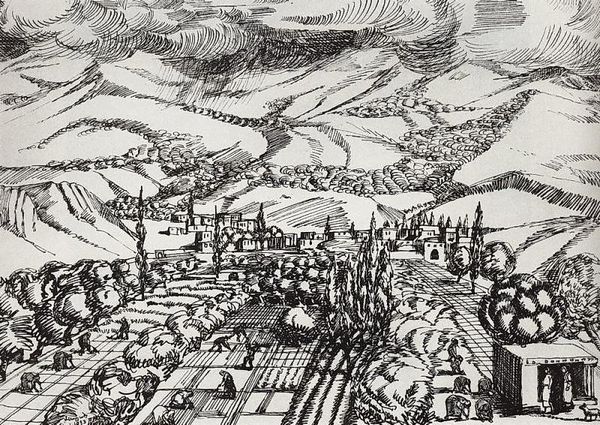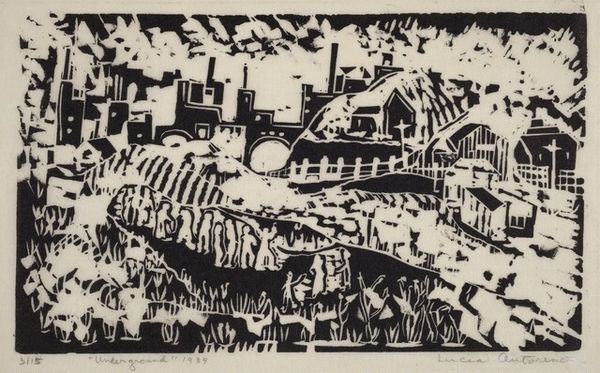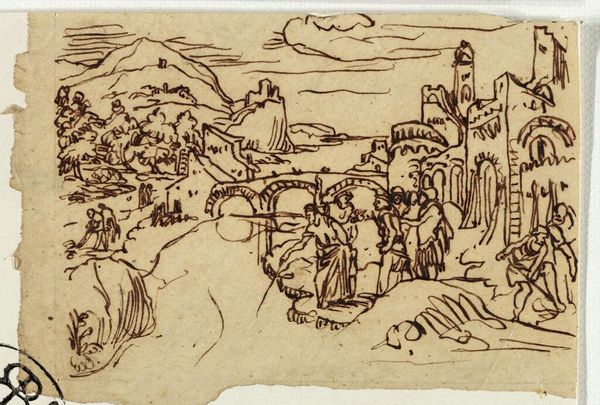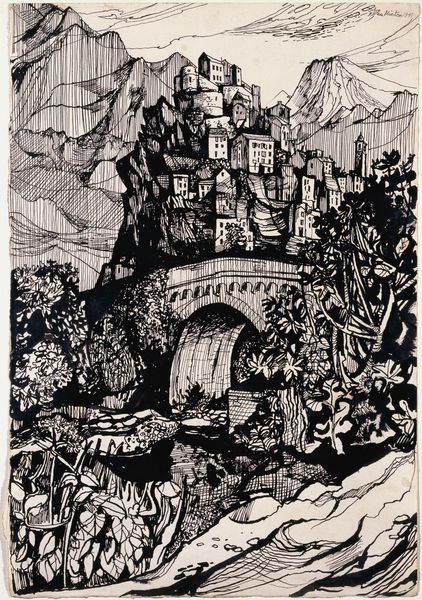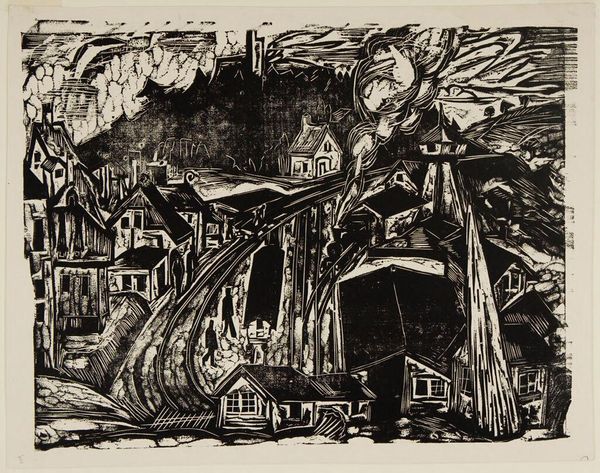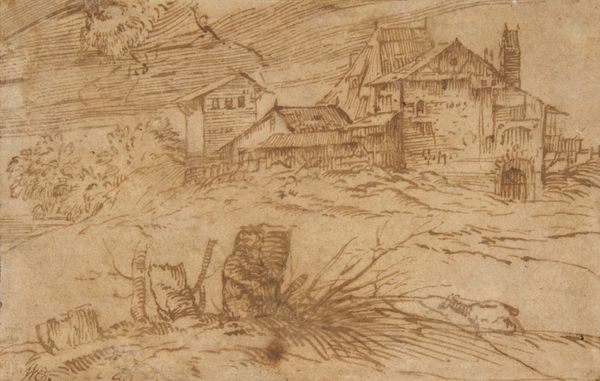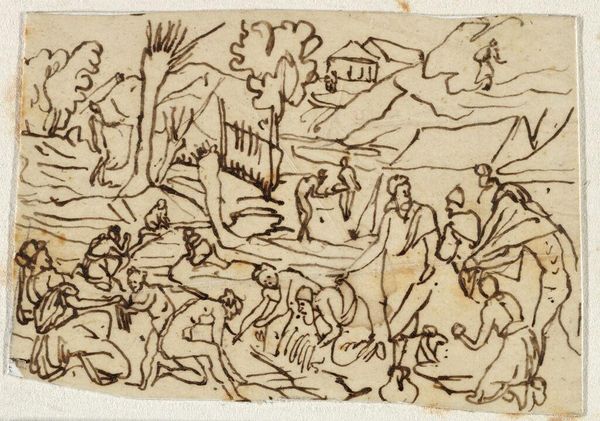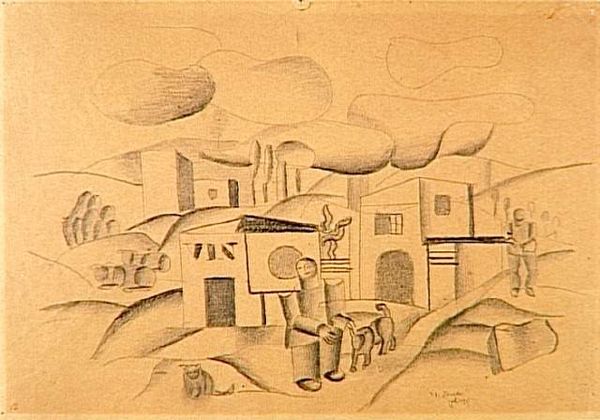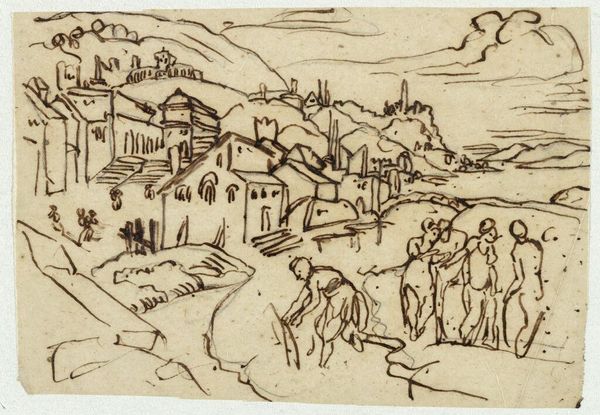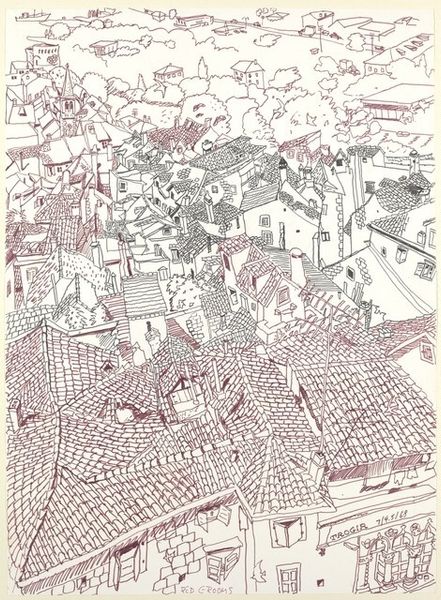
drawing, ink
#
drawing
#
landscape
#
ink
#
expressionism
#
cityscape
Copyright: Hans Hofmann,Fair Use
Editor: Here we have Hans Hofmann’s ink drawing, "St. Tropez," created in 1928. It’s a whirlwind of lines, a kind of chaotic cityscape. What do you see in this piece from a formal perspective? Curator: The power of this piece resides in its energetic mark-making. Hofmann has eschewed traditional perspective for a dynamism achieved through line and form alone. Notice how the varying thickness and density of the ink lines create a sense of depth, even as the composition remains resolutely two-dimensional. Editor: It almost feels like he's capturing the essence of St. Tropez rather than depicting it realistically. Curator: Precisely. Look at how the architectonic forms of the buildings are reduced to their basic geometric components - cubes, cylinders - and then recombined in a way that emphasizes their structural relationships. The work anticipates his later abstractions while keeping an expressionistic feel. The lines aren't just descriptive, they're performative. What sensations do the linear rhythms evoke? Editor: I notice a nervous energy that reflects the speed and activity of modern life. What I appreciate is the intensity of these stark black marks and the contrast with the blank page. Curator: Yes, the contrast underscores the dynamic interplay between positive and negative space, activating the entire composition. One can trace here the rudiments of Hofmann’s push and pull theory which later become fundamental in understanding his paintings. Editor: That’s interesting. I can now understand how this expressionistic cityscape would eventually become the fully non-representational paintings he’s so well known for. Thanks for clarifying! Curator: My pleasure. This close analysis reveals the foundation of Hofmann's visual language.
Comments
No comments
Be the first to comment and join the conversation on the ultimate creative platform.
